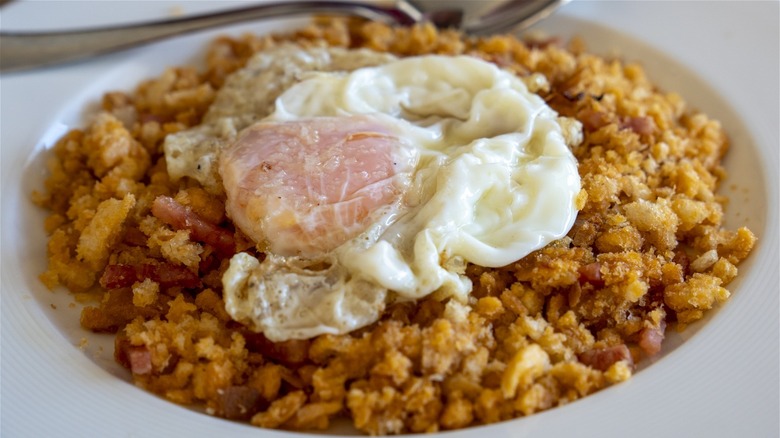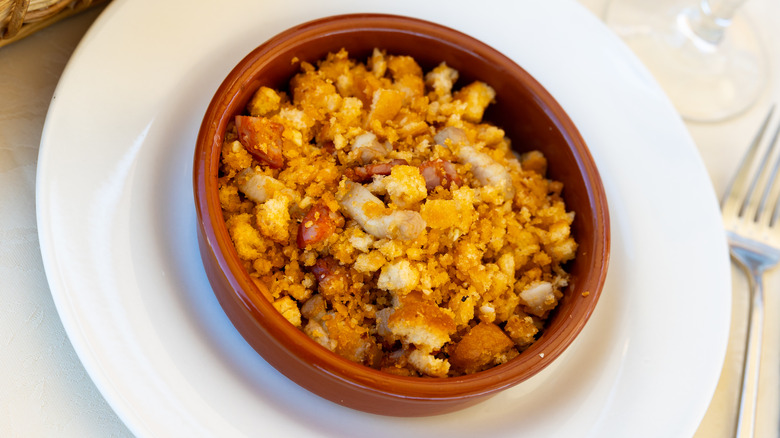Migas Is The Breakfast Variation Of Chilaquiles With A Cloudy Origin
Stateside, there are two widely known Mexican dishes involving crispy pieces of fried tortilla and, oftentimes, eggs. One of these is chilaquiles, and the other, migas. While these dishes have their similarities, they do have a few distinct differences. The most noticeable is the fact that migas involve tortilla strips stirred into scrambled eggs, while saucier chilaquiles feature crispy tortilla wedges topped with salsa and maybe some fried eggs and/or meat.
Yet another way in which migas differ from chilaquiles is in their origin story. The latter dish has a name that comes from the Nahuatl, and the indigenous creation post-dates the Spanish conquest. The first known reference to it dates to the 16th century, but no recipe was published until some 250 years later. (No eggs or cheese in this version, only chorizo or pork as the protein.) The migas recipe, on the other hand, is a more recent creation, most likely an early 20th-century adaptation of a Spanish dish made from stale bread ("migas" being the Spanish word for crumbs). No one knows exactly who created the egg-and-tortilla version we know today, though. Generally, they're thought to have been the brainchild of thrifty Mexican cooks reluctant to toss out their stale tortillas.
Spanish and Mexican-style migas are really quite different
As with any dish that originated in Europe, made its way to Mexico, and crossed the border into Texas, there are a number of different versions of migas, and each is equally traditional in its own way. In Spain and neighboring Portugal, migas have a base of stale bread chunks soaked in water, then fried in lard. These croutons are then seasoned with garlic, paprika, and peppers and are usually topped with some type of meat, such as Spanish-style chorizo or jamón. Other possible add-ins include mushrooms, green vegetables, and grapes.
Mexican or Tex-Mex migas, on the other hand, may be made from either corn or flour tortillas, although tortilla chips make for an acceptable (if less authentic) shortcut. They typically include cheese and salsa but can also feature beans, tomatoes, onions, avocados, jalapenos, or other Southwestern-style ingredients. In fact, in some recipes, migas almost come across as eggy nachos. While the scrambled eggs make us think of migas as a breakfast or brunch dish, they work well for any time of day.

